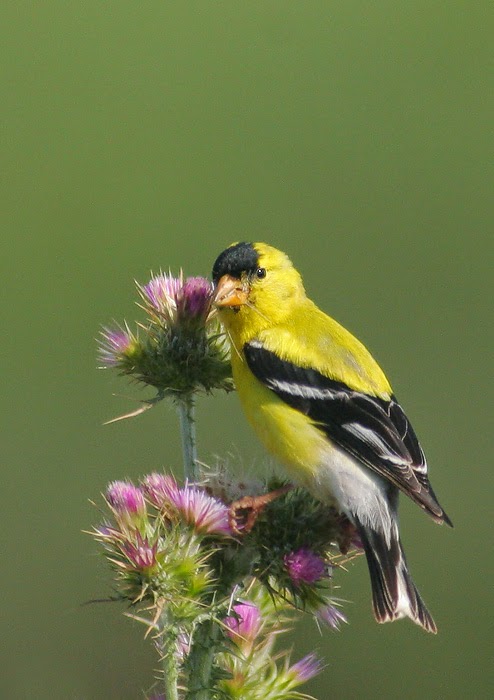Another name for the American goldfinch is “wild canary,” which probably dates back to when many Americans raised domesticated European canaries in cages.
When I was about 4, my mother raised European canaries for sale. The female canary, when provided with small twigs and grasses and an appropriate male companion, would actually build a nest in her cage, lay eggs and raise a brood.
In the spring, Mom and I would walk the fields searching for the wild mustard plant so the caged birds could have some greenery to go along with their past winter’s diet of dry seeds. While out and about, I would see and hear the beautiful male American goldfinch, which had a song that was very similar to the caged canaries.
The goldfinch actually has several songs, but the one I most remember was made in flight and sounded like “per-chic-o-ree.” The male, in April after the winter moult, sports a bright yellow color except for the black wings and tail.
I nicknamed the male the “sunshine bird.” The female resembles the male with the black wings and tail, but there is more of an olive color that replaces the bright yellow.
The autumn/winter moult results in the male and female both acquiring the olive color along with the black wings and tail, making it somewhat difficult to distinguish between the two.
The American goldfinch is 5 inches long with a wingspan of 9 inches and a weight of less than a half an ounce. It is one of the latest nesters; commonly found in flocks until mid-summer.
Nesting doesn’t start until late July or even after that, with the last nests completed around Sept. 10. This coincides with when food sources are plentiful. Although they eat some insects in the spring, their primary foods include seeds of wild chicory, ragweed, thistle, and sunflowers.
Look for goldfinch nests in shrubs or small trees from just a few feet to 20 feet above the ground. In them you may find up to five pale blue eggs. The female builds a durable nest cup of fine vegetable fiber that is woven and lined with thistle and cattail down.
Then the female, alone, incubates for 12 to 14 days. The brightly colored handsome male’s job during this time is to feed his mate.
If you maintain feeder stations with mostly black-oiler sunflower seed in late summer and early fall, you may not see many American goldfinch because they are involved with raising a family.
Sometimes in the spring, whenever insects are starting to hatch, the goldfinch may again temporarily disappear. But, the remainder of the year, especially when winter sets in, you will receive many hours of enjoyment at your feeders watching this colorful bird.





